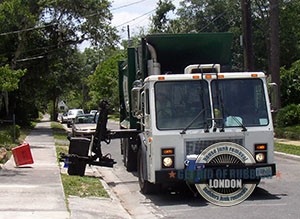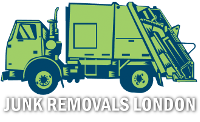In order to ensure the success of national recycling programs, governments need to be able to collect a sufficient amount of waste from general population. Efficient waste removal and collection is an essential aspect of recycling in general, as without it the process itself would not exist.
There are different means or methods used to remove and collect waste from households and businesses on a regular basis. Mainly these are general-purpose curbside collection, buy-back centres, and drop off centres.
In the case of curbside waste removal, which is the most common type of rubbish collection, there are three subsystems of collection. The difference between rubbish collection subsystems is based on how and where waste is separated from recyclables, and where these are subsequently cleaned and sorted for recycling. In all cases, rubbish removal or collection is done using a specialised rubbish removal vehicle.
Mixed waste collection system – by this method all collected recyclables are mixed in with general rubbish and then transported to specialised sorting and segregation facilities where recyclable materials are separated from general waste and then sorted as per their type and quality. A downside of mixed waste collection is that a notable amount of recyclable waste ends up being soiled (contaminated as professionals refer to it) thus unfit for recycling. Upsides of the same method include no public expenditure for separate/specialised rubbish removal and disposal, also no costs incurred for educating the public.
Commingled/Single stream collection system – in this case, rubbish removal authorities collect all recyclables separately from general waste. All recyclables (glass, paper, wood, plastic metal) are then mixed together (known as commingling) but are kept separately from general/non-recyclable waste. An upside of this particular system is a great reduction of waste separation and segregation costs (expenses regarding post collection cleaning). However, a downside is that population must be educated on what waste is recyclable.
 Source separation collection system – this system is the most efficient in terms of contamination avoidance and sorting costs. In this case, rubbish collection happens a number of times using different specialised rubbish removal vehicles. Source separation required households and businesses to separate recyclables from general waste, as well as to separate recyclables from one another. This saves authorities a considerable amount of post-collection expenses and ensures purer recyclates. Having said this, the costs of having to collect different recyclables separately are substantial, plus an extensive public education program must also be devised and implemented – more expenses.
Source separation collection system – this system is the most efficient in terms of contamination avoidance and sorting costs. In this case, rubbish collection happens a number of times using different specialised rubbish removal vehicles. Source separation required households and businesses to separate recyclables from general waste, as well as to separate recyclables from one another. This saves authorities a considerable amount of post-collection expenses and ensures purer recyclates. Having said this, the costs of having to collect different recyclables separately are substantial, plus an extensive public education program must also be devised and implemented – more expenses.
Countries generally use either the commingled or source separation programs as they usually present similar overall costs. Not long ago, source separation was the preferred method for many nations as it was cheaper than having to sort commingled waste. However, advances in sorting technology such as introduction of infrared optical sorters and others similar have now made commingling the more cost effective option, which is the main reason why countries are making a switch from source separation collection systems.
Overall, effective recycling programs on a national level require a combination of financial resources, sufficient amount of public awareness and education, and use of the most efficient waste sorting program.
